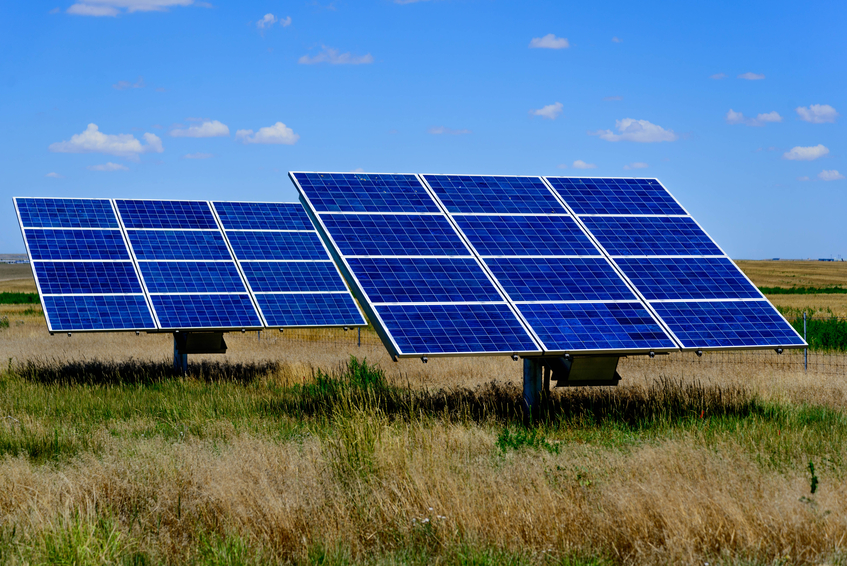Ground-Mounted vs. Rooftop-Mounted Solar Panels
A new solar project is installed every 2.5 minutes, and yours just may be the next one. One of the biggest decisions you’ll have to make before getting started, though, is between ground-mounted and rooftop-mounted panels. Ground-mounted solar panels are free-standing and able to be installed anywhere on your property — including the front, side, or backyard — whereas rooftop-mounted panels must be attached to your roof.
Both options have unique benefits and make sense for different household situations and needs. Before moving forward with solar installation, make sure you are confident in your panel choice. Here, we’ve simplified the decision-making process by laying out a few of the biggest differences between ground-mounted and rooftop-mounted solar panels.
Ground-Mounted Arrays
Costs: Ground-mounted panels often cost more than roof-mounted systems because they require additional materials, time, and labor. Solar installers generally use a cement foundation or reinforced pole structure to ensure the panels are propped up off the ground, tilted at the proper angle, and then wired to your home, all of which ends up being a slightly more involved — and expensive — process.
Space: If you have a large yard or a lot of space, you can install a much bigger ground-mounted system than you could with a rooftop-mounted system, giving you the opportunity to generate more energy and save on your utility bill. However, a large ground-mounted system will consume more of your land, leaving you less space for recreation or gardening.
Aesthetics: Ground-mounted solar panels typically sit between a few inches and several feet above the ground, depending on your location and the mounting system. If you have a small yard and a bulky array, the panels may stand out more than they would on a rooftop. This can be a significant deterrent to homes with manicured lawns and landscaped gardens.
Positioning: Free-standing solar panels should face south or west, with southwest or southeast alignments as possible alternatives. With a ground-mounted system, you can make sure your panels are oriented in the right direction and at the right angle without any potential shade to generate maximum solar energy. It’s also a lot easier to install a sun-tracking system on a ground-mounted array, which can lead to higher efficiencies.
Cleaning and Maintenance: While solar panels don’t require much maintenance, you may need to clean or repair them at some point. As ground-mounted panels are closer to the ground, they are easier to clean and maintain than those on a roof. The only extra effort a ground-mounted array owner will need to invest is to keep the base of the panels clear during cold and snowy weather, as new snow on the panels can only slide off if the area below is clear.
Roof-Mounted Arrays
Costs: Rooftop-mounted panels are more common, and they’re usually easier and faster to install. The only thing that might increase those costs significantly is the condition of your roof. Rooftop-mounted panels require a steady, well-maintained roof that is expected to last at least 20 years. If your roof is more than 10 years old, you will likely have to replace it during the solar array’s lifetime. Uninstalling and reinstalling solar panels is complicated, time-consuming, and expensive, so you may want to replace the roof before installing your panels, which will increase overall costs.
Space: With rooftop-mounted panels, you’re much more limited in how large of a system you can install. because you likely don’t spend a lot of time on your roof, a rooftop-mounted system will preserve your land’s usable space.
Aesthetics: Rooftop-mounted systems are generally less noticeable, though it does depend on the positioning of your home. If the front of your home faces south, the panels will be very visible. If your home faces north, on the other hand, you can hide the solar panels better by placing them on the backside of your roof. A new alternative is installing solar panels shaped like roof shingles.
Positioning: Rooftop-mounted solar panels are restricted by multiple variables, including the type of roof, angle, and direction. A slate roof with a steep pitch isn’t ideal for rooftop solar, for example, while asphalt roofs with a gentle slope are ideal. Obstructions such as chimneys, skylights, trees, or buildings can also cast shadows on rooftop panels, reducing overall production.
Cleaning and Maintenance: Roof-mounted arrays will require a bit more caution and care when it comes to maintenance. While some owners feel comfortable cleaning their panels with a broom or pressure washer, those practices may void the warranty on certain arrays. To be safe, it’s generally a better idea to invest in a professional cleaning and checkup every year or so.
There’s no one right choice when it comes to deciding between ground-mounted and rooftop-mounted solar panels. Both solutions offer benefits, and the best arrangement ultimately depends on your property and preferences. If after reviewing the benefits and drawbacks of each option you’re still not sure what would be best for your home, connect with a local solar panel provider for a consultation. They can assess your property and provide a recommendation. And if you’re still not totally convinced as to whether or not solar is a good choice for your home, use a solar panel installation cost calculator to determine the cost and benefits of using solar power for your home.


